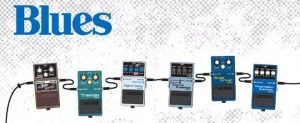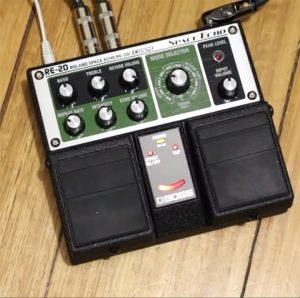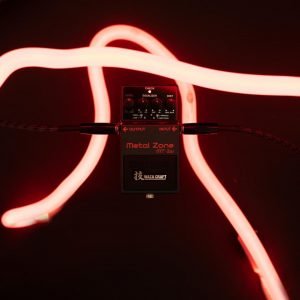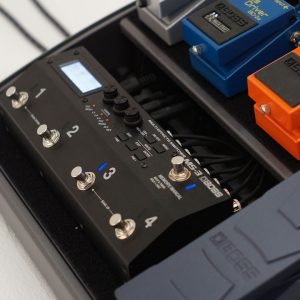In late 2012 Melbourne six piece electronic pop band Alpine released their debut album ‘A is for Alpine’ to much acclaim. It features eleven pristinely produced enchanting dreamscapes, as cool and breezy as their moniker alludes to. During a short break at home in between American tours, Alpine’s keyboard player Tim Royal sat down with Greg Phillips to discuss the band’s approach to recording and their stage show.
The Alpine sound is a distinctive one. It’s based heavily on the serene dual harmonies of front women Phoebe Baker and Lou James, plus the songwriting and arranging skills of guitarist Christian O’Brien. “As a band we are quite lucky because we can do whatever we want and they make it sound like Alpine anyway,” said keyboardist Tim of the band’s prime movers.
It’s a formula which has worked well to date. This year has been a busy one for the band. They’ve just come off the first part of a USA tour supporting Empire of the Sun. In late September they appeared on the hugely popular national American TV talk show Jimmy Kimmel Live, where they performed two songs and in mid October they return to the States and Canada for more dates.
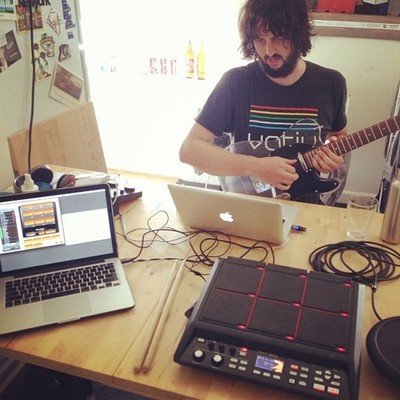
Tim Royal began his musical journey playing the family antique upright piano as a kid, stopped in his early teens when he “got interested in girls”, then took it up again for Alpine’s first incarnation, Swiss. For both Swiss and the early days of Alpine, economic circumstances dictated that the band could only use soft synths and a MIDI controller rather than the hardware they craved. Once Alpine had attracted record label interest, they were able to invest back into the band. Their first purchase was a Roland Juno D.
 “My only experience with synths was pretty much through friends who had old Juno 6’s, one had a JX3P and they were the only things I’d played with really,” explained Tim. “They seemed like my fluent language in a way. When it came time to afford some stuff, the Juno D was the obvious choice because it is so portable and road proven. It’s still the only original surviving instrument in the band, which is testament to its strength. Also one of the main attractions of why we went for the Juno D as opposed to anything else was that the piano sounds were better. A lot of them, much to our producer’s surprise, survived and made it onto the record. There are mixes of real grands on the record but the piano sounds were definitely a drawcard.”
“My only experience with synths was pretty much through friends who had old Juno 6’s, one had a JX3P and they were the only things I’d played with really,” explained Tim. “They seemed like my fluent language in a way. When it came time to afford some stuff, the Juno D was the obvious choice because it is so portable and road proven. It’s still the only original surviving instrument in the band, which is testament to its strength. Also one of the main attractions of why we went for the Juno D as opposed to anything else was that the piano sounds were better. A lot of them, much to our producer’s surprise, survived and made it onto the record. There are mixes of real grands on the record but the piano sounds were definitely a drawcard.”
Much like Alpine’s music, their stage set up is quite clean and sparse, and Roland gear features quite prominently.
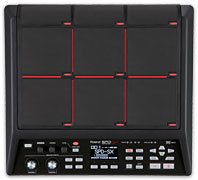 “I run a Roland Juno D and a whole bunch of pedals afterwards,” said Royal. “I usually have a keyboard amp, a twelve inch Roland Cube on stage as well for a bit of extra monitoring. We usually run a split line so the amp crunches up the signal a little bit. The sound guy has a clean one as well. The drummer uses the Roland SPD-SX (sampling pad), the new one. We upgraded from the old ones. That’s pretty much the second band instrument and has been with us a long time and it frees him up to do what he needs to do. Pedal wise, both Christian and I use a Boss Blues Overdrive, usually in combination with a couple of other things to warm the tone up a bit. Christian uses a Boss tuner as well.”
“I run a Roland Juno D and a whole bunch of pedals afterwards,” said Royal. “I usually have a keyboard amp, a twelve inch Roland Cube on stage as well for a bit of extra monitoring. We usually run a split line so the amp crunches up the signal a little bit. The sound guy has a clean one as well. The drummer uses the Roland SPD-SX (sampling pad), the new one. We upgraded from the old ones. That’s pretty much the second band instrument and has been with us a long time and it frees him up to do what he needs to do. Pedal wise, both Christian and I use a Boss Blues Overdrive, usually in combination with a couple of other things to warm the tone up a bit. Christian uses a Boss tuner as well.”
For an internationally touring band with so many synth options available, Tim is defiantly loyal to the Juno D. Despite being launched back in 2004 and with the newer, more powerful Juno Di now available, it’s the original D model which currently meets the band’s sonic requirements.
“For everything it’s ever done, I’ve never felt frustrated by it by any means,” he said. “Because the band has a fairly clean, simple sound, in a way it really compliments that. It doesn’t have big sweeping filters and stuff but that doesn’t suit us, so for the moment I don’t think we’re upgrading … potentially the Jupiter 50 down the track. We’ll have to see what the second record is sounding like.”
The more familiar Royal has become with the Juno D’s features, the more he has been able to achieve with it. He explains.
“The way I first started using it was definitely very simply. Lately I have been triggering other things using the performance setup and multiple MIDI channels, so I have grown into it. Initially the thing I liked about it was its simplicity and the restriction of two tones (per patch). Some keyboards have endless options and the restriction really made me concentrate on the specifics rather than thinking, if it doesn’t work, I’ll just add more. It really honed my technique of mixing the trail end of a saxophone for example, with a SAW synth or something to give it a bit more of a natural sound.”
Anyone who has heard the band’s debut album will be aware of the wide variety of sounds Royal has been able to create from his synth. More often than not, his sounds begin with the Juno D’s presets.
 “I definitely use them as starting points,” he said. “Everything I play in Alpine is a surprising combination of things usually. To try to get something different or distinctive I mix some of the natural sounds you wouldn’t normally use. One of our songs ‘Seeing Red’, the patch is made with a really slow attack SAW but the primary sound in it is a guitar patch knocked up four octaves so it has this really clinky sound. That’s one of the things I like about it (the Juno D), it has all these sounds you wouldn’t expect to use and you can use them in a more creative way.”
“I definitely use them as starting points,” he said. “Everything I play in Alpine is a surprising combination of things usually. To try to get something different or distinctive I mix some of the natural sounds you wouldn’t normally use. One of our songs ‘Seeing Red’, the patch is made with a really slow attack SAW but the primary sound in it is a guitar patch knocked up four octaves so it has this really clinky sound. That’s one of the things I like about it (the Juno D), it has all these sounds you wouldn’t expect to use and you can use them in a more creative way.”
Once Royal has created his new soundscapes with the Juno D, he’s easily able to save them too.
“I use the MIDI function to back it all up. I do a Sysex dump. That’s the great thing about the Juno, you can do the whole synth as one thing. I have a Nord and have to do every single patch individually.”
For Royal, the Alpine voyage has been both an exciting ride and a steep learning curve. Valuable lessons learned from the recording of their debut album will definitely be taken into the studio when they begin their second record.
“We definitely learned some things,” he said “To record demos at a higher quality than we did. There are a few takes and little things that made it onto the record that were like Garageband style bits. We’ve all got better microphones now, even for home. Our producer Dan Hume also showed me a lot in terms of mixing sounds keyboard wise.”
At the moment, the second album is barely in its infancy. It merely consists of around four strong ideas, which may or may not lead to fully formed songs and there are some other bits and pieces they are working on slowly. The aim is to have an album out by the end of 2014.
www.alpineband.com


